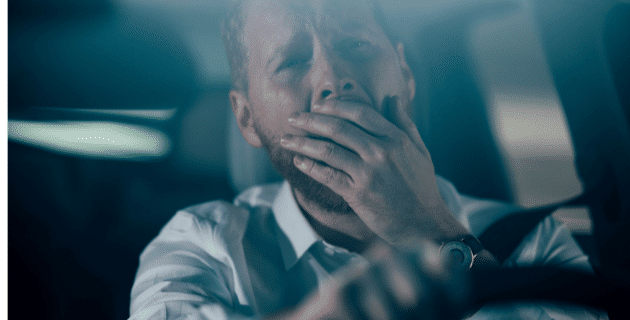Daylight savings may not only be affecting your sleep routine, research shows that daylight savings also has a connection with a surge in fatal car crashes.
During daylight savings time in the spring our clocks “spring forward” one hour, changing the amount of light we receive at certain times of day. Now we are experiencing the sun rising later in the morning and setting later in the evening. Although it’s just an hour difference, it can really take a toll on your body. “The sudden change in clock time can disrupt your sleep pattern, leading to a decrease in total sleep time and reduced sleep quality. This sleep disruption can reduce daytime alertness,” says Dr. Kelly Carden, the president of the American Academy of Sleep Medicine.
Drowsy driving along with now making the morning commute to work in the dark, are why researchers believe the spike in car accidents happen. Let’s look further into why that is.
Drowsy Driving
Drowsy driving is a form of distracted driving – the leading cause of car accidents in the United States. It’s a dangerous combination of fatigue and sleepiness that often happens when the driver has not gotten enough sleep, however drowsy driving can also be a side effect of sleep disorders, medication, drinking, or shift work.
Drowsy driving is responsible for more than 6,400 U.S. deaths annually. Remember, when you drive drowsy, you are not only putting yourself at risk, but you are also putting everyone else on the roadway at risk if you fall asleep, are unable to react in time, or lose control.
Drowsy Driving…
…makes you less able to pay attention to the road.
…slows reaction time if you must brake or steer.
…affects your ability to make good decisions.
The best way to avoid driving drowsy is to make sure you are getting enough sleep at night (the recommended amount for adults is 7 hours) by practicing good sleeping habits. And to avoid any substances that may make you more tired before getting on the road.
Driving in the Dark
With the time change, it’s likely that your morning commute is now entirely in the dark. And while that may not seem like a major change, depth perception and peripheral vision can be compromised in the dark, and the glare of headlights from an oncoming vehicle can temporarily blind or disorient you.
Visibility is also limited to less than 500 ft, meaning there is less time to react in case of an emergency or if something is in the middle of the roadway, like a tire or deer. Because of this, the number of road fatalities triples when it’s dark.
Unfortunately, for those who in situations where drowsy and night driving are unavoidable, like workers with irregular hours or parents of newborns, etc. here are a few tips that you can do behind the wheel to help prevent a crash.
-
- Be aware of your surroundings – watch for other drivers, animals, or obstructions in the roadway that could be hidden by the darkness
- Slow down – don’t be afraid to reduce your speed when visibility is low
- Stay alert to the best of your ability – turn on the air conditioner or some loud music to help you focus and stay awake.
- Don’t look directly into headlights – avoid bright headlights by starting at the white line on the right-hand side of the road when other cars are passing.
- Avoid common distractions– like food or your phone
- Limit your night driving – if it’s not necessary, stay in!
- Always follow the rules of the road– never speed or break the law to get to your destination quicker
- If you know you cannot drive– ask someone for a ride or call a rideshare
And in the case of an accident make sure you are covered, by having the proper auto insurance protection.
This article is furnished by California Casualty, providing auto and home insurance to educators, law enforcement officers, firefighters, and nurses. Get a quote at 1.866.704.8614 or www.calcas.com.
- Graduation – When to Remove Your Child from Your Auto Policy - May 18, 2023
- How to Prevent Catalytic Converter Theft - May 17, 2023
- How Much Does Home Insurance Cost? - May 17, 2023

